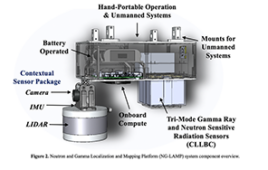The length of the satellite record for the Greenland and Antarctic ice sheets is currently too short to tell if the recently reported speed-up of ice loss will be sustained in the future or if it results from natural processes, according to a new study led by Dr Bert Wouters from the University of Bristol.
The findings, published in Nature Geoscience, underscore the need for continuous satellite monitoring of the ice sheets to better identify and predict melting and the corresponding sea-level rise.
The ice sheets covering Antarctica and Greenland contain about 99.5% of the Earth’s glacier ice which would raise global sea level by some 63m if it were to melt completely. The ice sheets are the largest potential source of future sea level rise—and they also possess the largest uncertainty over their future behaviour. They present some unique challenges for predicting their future response using numerical modelling and, as a consequence, alternative approaches have been explored. One common approach is to extrapolate observed changes to estimate their contribution to sea level in the future.
Since 2002, the satellites of the Gravity Recovery and Climate Experiment (GRACE) detect tiny variations in Earth’s gravity field resulting from changes in mass distribution, including movement of ice into the oceans. Using these changes in gravity, the state of the ice sheets can be monitored at monthly intervals.
Dr Bert Wouters, currently a visiting researcher at the University of Colorado, said: “In the course of the mission, it has become apparent that ice sheets are losing substantial amounts of ice—about 300 billion tonnes each year—and that the rate at which these losses occurs is increasing. Compared to the first few years of the GRACE mission, the ice sheets’ contribution to sea level rise has almost doubled in recent years.”
Yet, there is no consensus among scientists about the cause of this recent increase in ice sheet mass loss observed by satellites. Beside anthropogenic warming, ice sheets are affected by many natural processes, such as multi-year fluctuations in the atmosphere (for example, shifting pressure systems in the North Atlantic, or El Niño and La Niña events) and slow changes in ocean currents.
“So, if observations span only a few years, such ‘ice sheet weather’ may show up as an apparent speed-up of ice loss which would cancel out once more observations become available,” Dr Wouters said.
The team of researchers compared nine years of satellite data from the GRACE mission with reconstructions of about 50 years of mass changes to the ice sheets. They found that the ability to accurately detect an accelerating trend in mass loss depends on the length of the record.
At the moment, the ice loss detected by the GRACE satellites is larger than what we would expect to see just from natural fluctuations, but the speed-up of ice loss over the last years is not.
The study suggests that although there may be almost enough satellite data to detect a speed-up in mass loss of the Antarctic ice sheet with a reasonable level of confidence, another ten years of satellite observations is needed to do so for Greenland. As a result, extrapolation of the current contribution to sea-level rise of the ice sheets to 2100 may be too high or low by as much as 35 cm. The study, therefore, urges caution in extrapolating current measurements to predict future sea-level rise.
Citation: “Limits in detecting acceleration of ice sheet mass loss due to climate variability” by B.Wouters, J. L. Bamber, M. R. van den Broeke, J. T. M. Lenaerts and I. Sasgen in Nature Geoscience
Gravity Recovery and Climate Experiment (GRACE)
Source: University of Bristol




